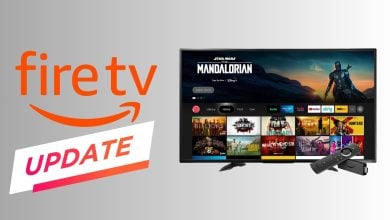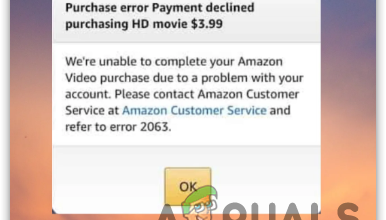[FIX] Amazon Prime Video Error Code 7031
Amazon Prime Video Error Code 7031 causes the video to stop playing suddenly after a few seconds, especially when you switch accounts or profiles in your web browser. This error means there’s a problem with the streaming service or your video request is being blocked.
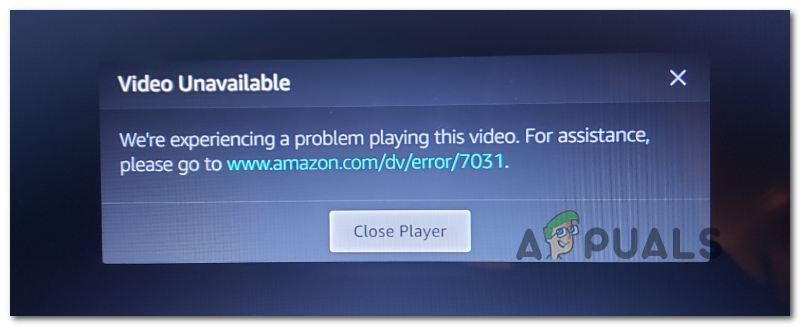
The most common reason is corrupted session data after changing accounts. Other possible causes include problems with cached data, bad cookies, issues with your VPN, or conflicts from browser extensions.
In this article, we will discuss different ways to solve this error.
1. Check Server Status
Before you attempt any of the fixes below, you should first make sure that the Error Code 7031 is not the result of a wider server problem outside of your control. This error code has shown up before due to massive Amazon Web Service outages, which broke streaming for many users around the world.
If you suspect this might be the case, start by checking if others are experiencing the same problems with Amazon Prime. Check IsTheServiceDown and DownDetector to see if other users are reporting similar issues.
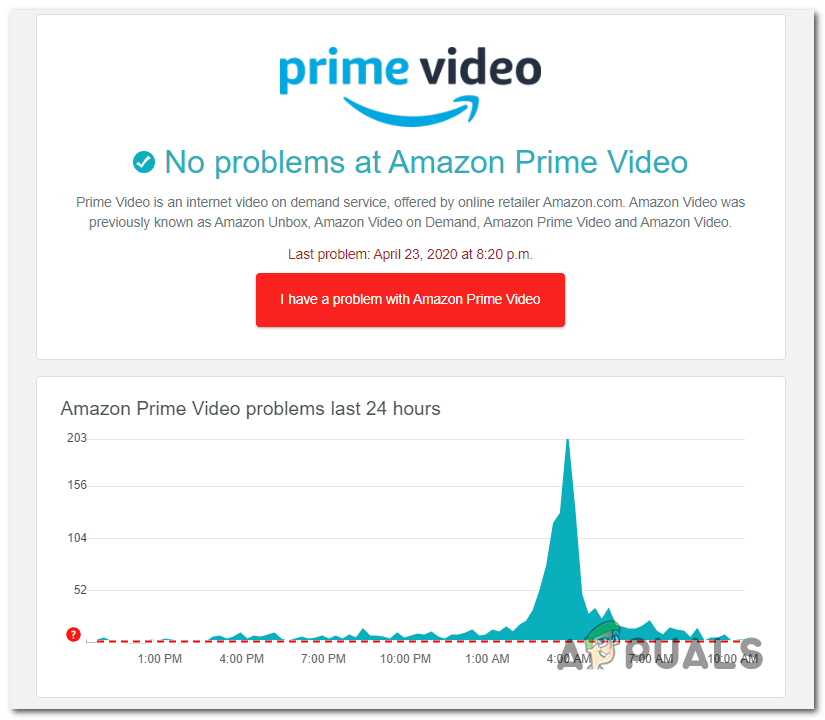
Note: If your check confirms that many other users are having the same problem, there isn’t anything you can do but wait for Amazon’s engineers to resolve the issue.
You should also check the official Amazon Video Twitter account for any official statements or updates from Amazon.
2. Steam From The .ca Domain
Some users in the US have discovered that the 7031 streaming error only occurs when they try to stream from https://www.primevideo.com/. However, switching to https://www.primevideo.ca/ allows them to stream normally without the error.

If you’re having this issue on the .com domain, try switching to .ca and see if you can stream content without problems.
3. Use Chrome (if applicable)
If you’re using Vivaldi or another lesser-known Chromium-based browser with its own modifications, there might be a compatibility issue. Amazon’s development team tends to prioritize major browsers and smart TV platforms, so fixes for smaller browsers can be slow.
The best option is to use Google Chrome for streaming Amazon Prime, as it is the most reliable and supported browser for the service. You can download the latest version of Chrome at this link (here).

Try streaming Amazon Prime with Chrome. If the error continues, or you’re already using Chrome.
4. Disable ‘Do Not Track’ Request in Chrome (if applicable)
If you’re using Google Chrome, you might see Error Code 7031 due to a Privacy setting called Send a “Do Not Track” request with your browsing traffic. This setting can interfere with Amazon Prime’s need to collect behavioral data, which can trigger the error.
Several Chrome users have resolved the issue and regained normal streaming by turning off this Privacy option.
- Click the three-dot icon in the top-right corner of Chrome, then select Settings.

Opening the Google Chrome settings - Scroll down to the Privacy and Security section, then click on More for additional options.
- Turn off the toggle for Send a “Do Not Track” request with your browsing traffic.
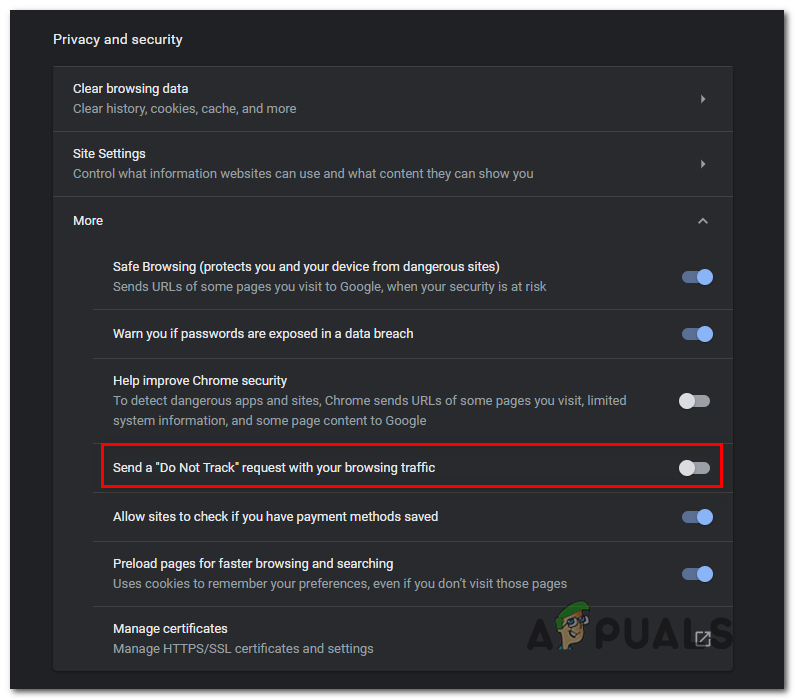
Disabling the Send a “Do Not Track” request with your browsing traffic Privacy option Note: If it’s already disabled, leave it as is and move to the next step.
- Once you disable this privacy option, refresh the Amazon Prime Video page and try streaming again to see if the error is fixed.
5. Enable Two-Step Verification (if applicable)
If you see this error while streaming Amazon Prime via PlayOn, it’s likely because two-step verification is not enabled on your account. Like other major services, Amazon Prime requires this extra layer of security when accessed through third-party services like PlayOn.
- Go here and sign in with your Amazon account linked to Prime.
- Once logged in and in the Advanced Security Settings, click on Get Started under Two-Step Verification.
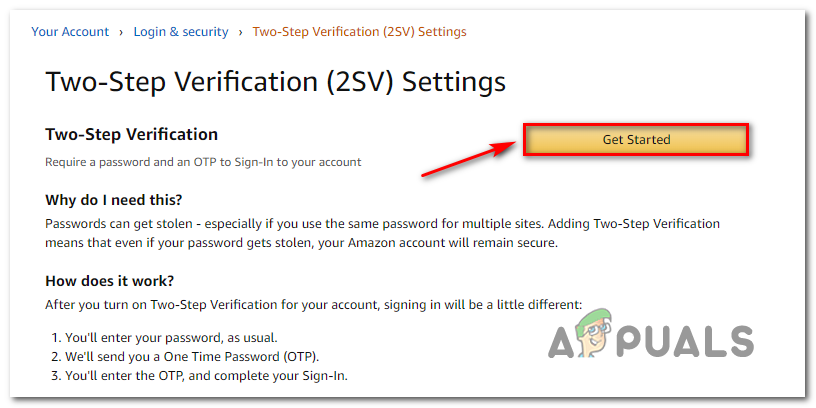
Enabling Two-Step Verification on Amazon Prime - On the next screen, enter your phone number, select your preferred delivery method and click Continue.

Choosing the verification delivery method Note: You can also use an Authenticator app if you prefer.
- Click Send Code, wait for your code to arrive (or use your Authenticator app), then enter the code and click Verify Code and Continue.
- Now that two-step verification is enabled, log out of Amazon Prime and log in again with the new security step. Try streaming to see if the error persists.
6. Use a VPN client
Sometimes, Error Code 7031 occurs because your location is preventing you from streaming certain titles (geo-blocked content). If this only seems to affect particular movies or shows, a geographical restriction might be to blame.
You can address this by using a reliable VPN client, which can make it appear that you’re accessing Amazon Prime from an allowed location.
If you need a trusted VPN, here’s a list of user-approved VPN clients that work with Amazon Prime Video.
Note: Hide.me VPN installs at the system level, making it excellent for bypassing restrictions on services like Amazon Prime or Netflix.
- Go to this link (here) in your desktop browser and click the Download button.
- On the next page, click Register and download the free version of Hide.me for Windows.

Downloading the VPN solution - Enter your email address and hit Enter to start registration.

Registering for the service Note: You’ll need a valid email address to complete the setup.
- Check your email for a verification message from Hide.me. Click the link inside, then set up your username and password.
- Once you’ve created your account, click Create account.

Creating an account with Hide.me - After signing in, go to Pricing > Free and select Apply now to activate your free plan.
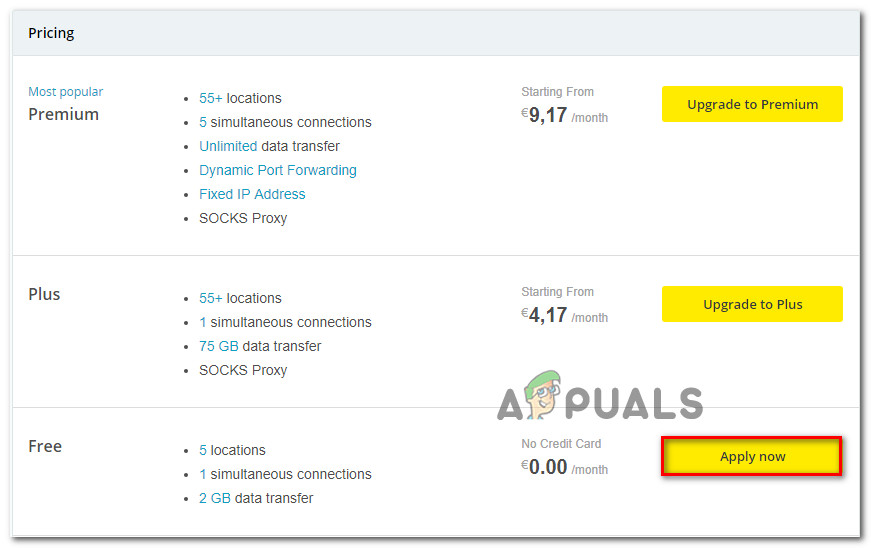
Apply for the free account Note: Start with the free trial to be sure this VPN works for streaming Amazon Prime and resolves Error Code 7031.
- Enable the free plan, go to the Download section, and click Download Now for your operating system.
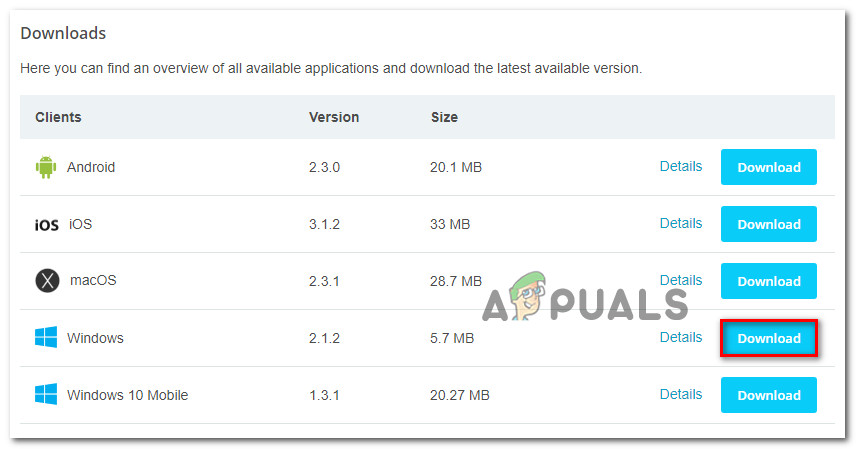
Downloading the Windows client of Hide.me - Once downloaded, double-click to install and follow the on-screen instructions.

Installing the Hide.Me VPN application - After installation, log in with the account you created.
- Click Start your free trial, and select a location that won’t have geo-restrictions (such as the US or Canada).
- Try streaming content from Amazon Prime again to see if the error has been resolved.



